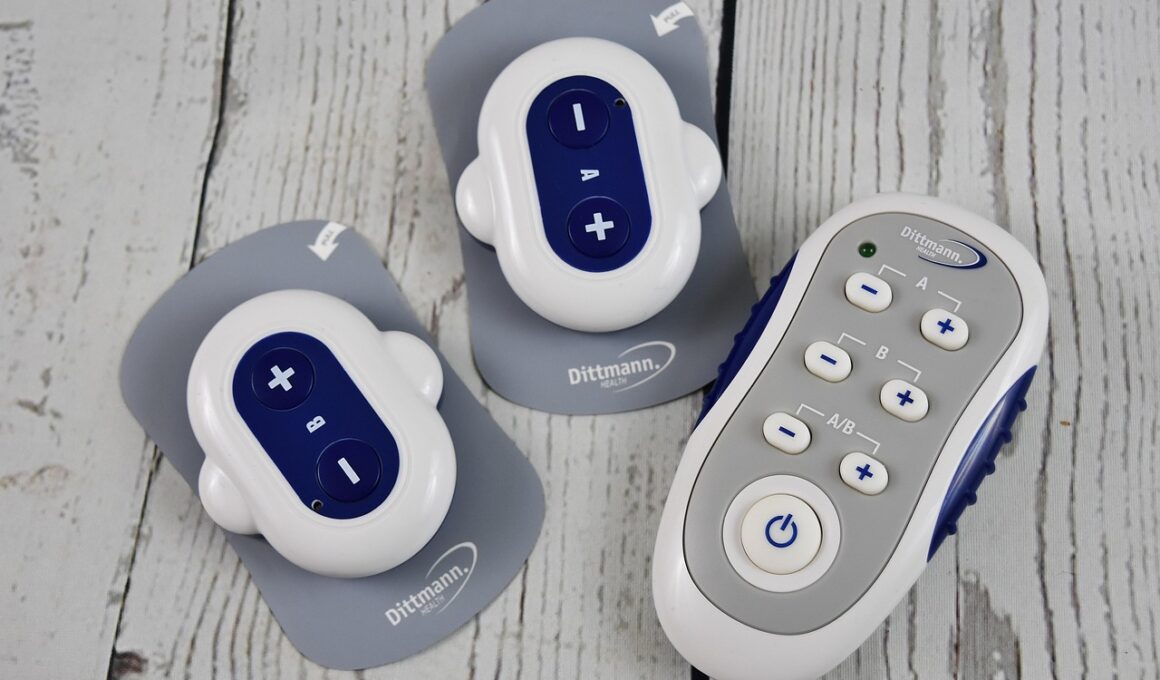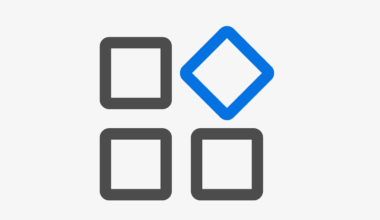Electrical Stimulation Therapy in Golf Fitness Recovery
Recovery is a crucial aspect of maintaining peak performance in golf and enhancing overall fitness. Electrical stimulation therapy (EST) serves as an excellent strategy in this domain. This method involves applying electrical impulses to stimulate muscles, promoting faster recovery from workouts and enhancing muscle repair. For golfers, who often put immense stress on their muscles and joints, effective recovery techniques can lead to better performance during gameplay. This therapy helps reduce muscle soreness and fatigue, which can minimize downtime between training sessions. By implementing EST into recovery routines, players can enhance flexibility and decrease the risk of injury. Additionally, it aids blood circulation, delivering essential nutrients to muscles, thereby speeding up the healing process. This therapy can be effectively integrated into warm-up routines before practice sessions and tournaments, allowing golfers to feel rejuvenated and ready. Golfers of all levels, from amateurs to enthusiasts, can benefit from this technology. Understanding how EST functions is a valuable first step toward incorporating it into your golf fitness recovery.
There are several different types of electrical stimulation therapy techniques available for golfers seeking recovery enhancements. Among them, neuromuscular electrical stimulation (NMES) is particularly beneficial for muscle rehabilitation and recovery. NMES uses electrical impulses that mimic natural muscle contractions, facilitating blood flow and nutrient delivery to the affected areas. This technique efficiently combats muscle atrophy and promotes strength gain. Another effective method is transcutaneous electrical nerve stimulation (TENS), which focuses primarily on pain relief. The TENS unit alters pain perception and contributes to relief in sore areas of the body. Furthermore, low-frequency electrical stimulation is advantageous for quote-unquote active recovery, promoting muscular relaxation. When exploring these options, golfers can select therapy devices tailored to their specific needs. These units often come in portable formats, which allows ease of use both at home and on the course. The portable design also enables quick application, connecting with the players’ busy schedules. Additionally, incorporating these enhancements into regular training regimens can drastically improve a golfer’s fitness and readiness for competition.
Benefits of Electrical Stimulation Therapy
The benefits associated with electrical stimulation therapy in golf fitness recovery extend beyond mere muscle recovery. Enhanced recovery strategies using EST result in improved athletic performance overall. By decreasing recovery time between sessions, players can maintain a more rigorous training schedule, which, in turn, yields superior results on the golf course. Furthermore, EST also enables golfers to focus on active recovery techniques, allowing them to fine-tune their skills while still promoting healing in their bodies. Improved recovery also translates to enhanced mobility and joint flexibility, two crucial aspects of an efficient golf swing. Golf requires precise movements, and flexibility plays an integral role in achieving optimal swing technique. Those using EST will find that they can reach a wider range of motion, leading to increased power and accuracy in their shots. Additionally, regular use of EST can mitigate potential injuries, allowing golfers to maintain their practice without fear of strain or overuse. In summary, incorporating EST into your golf recovery regimen provides a comprehensive approach to enhancing overall performance.
Proper use of electrical stimulation therapy requires understanding the appropriate settings and techniques necessary for achieving optimal results. Each device manufactured to deliver electrical stimulation has user guidelines that outline settings such as frequency, duration, and intensity. Golfers should initially begin with lower intensity settings to assess how their body reacts to the impulses. As familiarity increases, users may adjust the intensity level according to their comfort and tolerance. Timing is equally essential; the therapy sessions should ideally occur post-workout or after practice, implementing them as part of a complete recovery strategy. Furthermore, while EST can significantly save recovery time, it should not replace traditional recovery methods entirely. Instead, it complements other techniques like stretching, massage therapy, and hydration to promote thorough recovery. If in doubt or if there are any contradictions with previously diagnosed conditions, consulting with a fitness professional is recommended. Investing time in learning efficient techniques will lead to better absorption of the therapy advantages. Taking a proactive approach in monitoring progress with EST can significantly enhance fitness and overall game performance.
Integrating EST Practically
Implementing electrical stimulation therapy into a golfer’s recovery routine requires thoughtful integration to maximize benefits. It’s advisable to develop a structured plan that incorporates the therapy sessions consistently within an overarching training schedule. For instance, golfers can allocate specific days for recovery involving EST after challenging practice sessions or tournaments. In addition, setting aside time for warm-ups allows golfers to enhance the delivery of benefits during active play. Experimentation with different settings can yield useful insights as performance is often influenced by variable factors, including muscle fatigue levels and previous workouts. Sharing experiences with fellow golfers and coaches could also provide valuable perspective. Furthermore, selecting the correct timing for utilizing EST is vital; therefore, scheduling sessions in alignment with individual goals is encouraged. As golfers progress and adapt, reviewing the effectiveness of the selected approach should occur regularly. Keeping track of improvements and listening to bodily cues is essential, as cognitive awareness allows room for adjustments essential for optimized muscle recovery and overall fitness objectives.
In conclusion, electrical stimulation therapy represents a positive addition to any golfer’s fitness recovery spectrum. With careful implementation and attentive adjustments, the technology holds great promise for enhancing recovery and accelerating muscle healing. Given its range of benefits, including reduced muscle soreness, improved flexibility, and injury prevention, athletes can gradually incorporate EST into their routines. Additionally, engaging in regular training allows golfers to refine their technique through swift recovery while cultivating focus during critical performance periods. As the knowledge of the innate benefits of EST continues to grow, golfers are encouraged to adapt to this innovative technology, ensuring their best performance on the course. Consider participating in workshops or seeking expert advice on using electrical stimulation safely and effectively, which can further enhance understanding and application. Overall, embracing new recovery strategies like electrical stimulation therapy can significantly impact athletic training and subsequent performance, reflecting the ongoing evolution of golf fitness methodologies. The future of golf fitness lies not only in traditional practices but also in pioneering technologies that save time while maximizing results.
As golfers become increasingly proactive in managing their fitness, the attraction to innovative recovery strategies will rise. Investments in cutting-edge technology, including electrical stimulation therapy, foster not only improved performance but also extend playing careers by safeguarding players from ineffective recovery practices. The unique combination of convenience, portability, and efficacy inherent in EST devices makes them appealing to golfers of all ages and skill levels. Transitioning to this modern approach allows for better adaptability within rigorous training regimes while maintaining player safety. As the sport continues to evolve, the integration of technology, including various recovery methods, becomes an integral part of the golfer’s lifestyle. By continuously exploring ways to implement electrical stimulation therapy effectively, players can foster systemic improvements, leading toward peak fitness states. Golfers should also remain informed about advancements and techniques related to this technology to optimize their experience. With individual needs and goals as the focus, the connection between performance and recovery using technologies like EST can unlock new potential. Each advancement serves toward enabling athletes to perform at their very best while embracing a healthier, longer-lasting approach to the sport.
Ultimately, the successful application of electrical stimulation therapy doesn’t only rely on the technology; understanding one’s body and its responses plays a pivotal role. Every golfer is unique, requiring a tailored strategy to align the therapy with personal recovery needs. By recognizing signs of fatigue and discomfort, players can utilize EST effectively. Athletes must strike a balance between utilizing technology and honoring their body’s natural recovery processes, which can lead to optimal performance. Therefore, continuous education on electrical stimulation therapy, coupled with active experimentation, sets the stage for achieving elevated athletic standards. Golfers are encouraged to remain committed to their physical wellness and prioritize recovery as integral to their training regimen. Integrating waypoints for reflection and adaptation will further solidify the beneficial aspects of this therapy. As players embrace electrical stimulation as an effective tool, the sport itself will evolve, leading to higher fitness standards. The growing acceptance of innovative practices in the world of golf demonstrates an exciting shift, steering the entire golfing community towards healthier recovery strategies.


